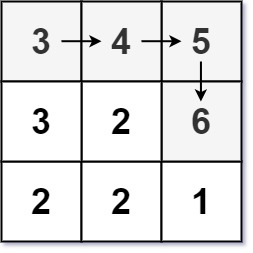2021-04-10 Daily-Challenge
Today is Saturday, I gonna review the tasks I've done this week, and finish today's leetcode's April LeetCoding Challenge with cpp.
LeetCode Review
Maximum Number of Occurrences of a Substring
too easy to review
Surrounded Regions
too easy to review
Number of Students Unable to Eat Lunch
too easy to review
Letter Combinations of a Phone Number
too easy to review
Verifying an Alien Dictionary
too easy to review
Determine if String Halves Are Alike
too easy to review
Minimum Operations to Make Array Equal
too easy to review
Global and Local Inversions
too easy to review
Number of Boomerangs
constexpr int distance(int x1, int y1, int x2, int y2) {
return (x1 - x2) * (x1 - x2) + (y1 - y2) * (y1 - y2);
}
class Solution {
public:
int numberOfBoomerangs(vector<vector<int>>& points) {
int len = points.size();
int answer = 0;
for(auto &p : points) {
vector<int> dis;
for(auto &pp : points) {
int d = distance(p[0], p[1], pp[0], pp[1]);
dis.push_back(d);
}
sort(dis.begin(), dis.end());
int d = -1;
int cnt = 0;
for(auto dd : dis) {
if(d != dd) {
answer += cnt * (cnt - 1);
d = dd;
cnt = 1;
} else {
cnt += 1;
}
}
answer += cnt * (cnt - 1);
}
return answer;
}
};
April LeetCoding Challenge 10
Description
Longest Increasing Path in a Matrix
Given an m x n integers matrix, return the length of the longest increasing path in matrix.
From each cell, you can either move in four directions: left, right, up, or down. You may not move diagonally or move outside the boundary (i.e., wrap-around is not allowed).
Example 1:

Input: matrix = [[9,9,4],[6,6,8],[2,1,1]]
Output: 4
Explanation: The longest increasing path is [1, 2, 6, 9].
Example 2:

Input: matrix = [[3,4,5],[3,2,6],[2,2,1]]
Output: 4
Explanation: The longest increasing path is [3, 4, 5, 6]. Moving diagonally is not allowed.
Example 3:
Input: matrix = [[1]]
Output: 1
Constraints:
m == matrix.lengthn == matrix[i].length1 <= m, n <= 2000 <= matrix[i][j] <= 231 - 1
Solution
const int moves[4][2] = {{0, 1}, {1, 0}, {0, -1}, {-1, 0}};
class Solution {
int rows;
int cols;
bool check(vector<vector<int>>& matrix, int row, int col) {
int ok = 0;
for(int i = 0; i < 4; ++i) {
int newRow = row + moves[i][0];
int newCol = col + moves[i][1];
if(newRow < 0 || newRow >= rows || newCol < 0 || newCol >= cols ||
matrix[row][col] <= matrix[newRow][newCol]) {
ok += 1;
}
}
// cout << row << ' ' << col << ' ' << ok << endl;
return ok == 4;
}
void dfs(vector<vector<int>>& matrix,
vector<vector<int>> &LIP,
int row,
int col,
int cur
) {
if(cur <= LIP[row][col]) return;
LIP[row][col] = cur;
for(int i = 0; i < 4; ++i) {
int newRow = row + moves[i][0];
int newCol = col + moves[i][1];
if(newRow >= rows || newRow < 0 || newCol >= cols || newCol < 0) continue;
if(matrix[row][col] >= matrix[newRow][newCol]) continue;
dfs(matrix, LIP, newRow, newCol, cur + 1);
}
}
public:
int longestIncreasingPath(vector<vector<int>>& matrix) {
rows = matrix.size();
cols = matrix.front().size();
vector<vector<int>> LIP(rows, vector<int>(cols));
for(int i = 0; i < rows; ++i) {
for(int j = 0; j < cols; ++j) {
if(check(matrix, i, j)) dfs(matrix, LIP, i, j, 1);
}
}
int answer = 0;
for(auto &row : LIP) {
for(auto n : row) {
// cout << n << ' ' ;
answer = max(answer, n);
}
// cout << endl;
}
return answer;
}
};